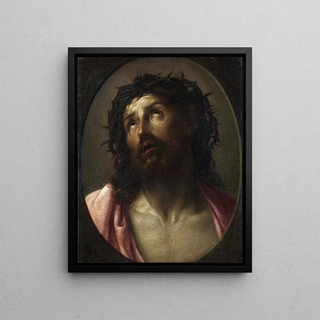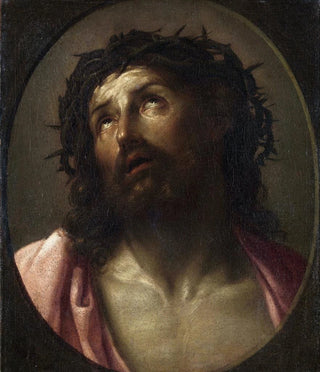Art print | L'homme des douleurs - Guido Reni


View from behind

Frame (optional)
The artwork "L'homme des douleurs" by Guido Reni is a masterpiece that embodies the depth of human emotion through the lens of suffering and redemption. In this poignant depiction, the artist manages to capture the melancholy and sadness of a Christ in the midst of pain, while evoking timeless beauty. This piece, which transcends eras, invites the viewer to introspective contemplation, immersing us in a universe where pain and grace coexist. Reni's technical mastery, combined with his keen sense of composition, makes this painting an essential part of art history, inspiring admiration among art enthusiasts for centuries.
Style and uniqueness of the work
Guido Reni's style is characterized by elegance and finesse that are immediately recognizable. In "L'homme des douleurs," the artist uses a delicate color palette, creating a striking contrast between shadows and lights. The flowing drapery and facial expressions of the characters demonstrate technical virtuosity that elevates the subject to an almost divine level. The posture of Christ, both vulnerable and majestic, evokes profound humanity, allowing the viewer to feel an intense emotional connection. Reni skillfully plays with light to accentuate the features of his subject, transforming suffering into a sublime form of art. This ability to merge pain and beauty is what makes this work so singular and unforgettable, a true testament to the artistic genius of its creator.
The artist and his influence
Guido Reni, an emblematic figure of the Baroque, knew how to leave his mark on his era with a style that combines classicism and innovation. Born in Bologna in 1575, he was trained by masters of Italian painting but quickly developed a signature style that set him apart. His influence on his contemporaries and subsequent generations is undeniable. Reni inspired many artists, not only through his technique but also through his ability to handle religious themes with a unique sensitivity. "L'homme des douleurs" is a perfect illustration of his approach, where spirituality co

Matte finish

View from behind

Frame (optional)
The artwork "L'homme des douleurs" by Guido Reni is a masterpiece that embodies the depth of human emotion through the lens of suffering and redemption. In this poignant depiction, the artist manages to capture the melancholy and sadness of a Christ in the midst of pain, while evoking timeless beauty. This piece, which transcends eras, invites the viewer to introspective contemplation, immersing us in a universe where pain and grace coexist. Reni's technical mastery, combined with his keen sense of composition, makes this painting an essential part of art history, inspiring admiration among art enthusiasts for centuries.
Style and uniqueness of the work
Guido Reni's style is characterized by elegance and finesse that are immediately recognizable. In "L'homme des douleurs," the artist uses a delicate color palette, creating a striking contrast between shadows and lights. The flowing drapery and facial expressions of the characters demonstrate technical virtuosity that elevates the subject to an almost divine level. The posture of Christ, both vulnerable and majestic, evokes profound humanity, allowing the viewer to feel an intense emotional connection. Reni skillfully plays with light to accentuate the features of his subject, transforming suffering into a sublime form of art. This ability to merge pain and beauty is what makes this work so singular and unforgettable, a true testament to the artistic genius of its creator.
The artist and his influence
Guido Reni, an emblematic figure of the Baroque, knew how to leave his mark on his era with a style that combines classicism and innovation. Born in Bologna in 1575, he was trained by masters of Italian painting but quickly developed a signature style that set him apart. His influence on his contemporaries and subsequent generations is undeniable. Reni inspired many artists, not only through his technique but also through his ability to handle religious themes with a unique sensitivity. "L'homme des douleurs" is a perfect illustration of his approach, where spirituality co






